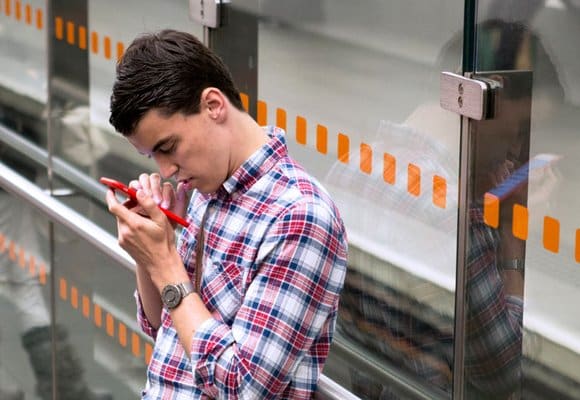
Kiosks and people who are blind or partially sighted
As part of our continuing series on accessibility, we were fortunate to interview Sabine Croxford from Royal National Institute of Blind People (RNIB), one of the UK’s leading sight loss charities. By Evan Schuman — Computerworld Columnist,writer for TechCrunch, SCMedia, podcaster, blogger.
The convenience and efficiency of kiosks is a powerful advantage to consumers. In a world where so many people are visually impaired to varying degrees, however, it is wise to rethink kiosk features, the screen layout, compatibility with peripherals (such as headphones), kiosk placement (away from noisier areas) and overall design.
Sabine Croxford is a user experience evaluator at RNIB, a UK sight loss charity. Croxford argues that companies–both those who use kiosks for their customers and those who manufacture or distribute them–must take the needs of blind and partially sighted people seriously.
The first step is to focus on the three groups at issue here:
People who have no or very limited residual vision
This group might need assistance initially getting to the kiosk and generally rely on tactile information (braille and tactile markings) in addition to auditory communication (speech and beeps). They will also need text-to-speech to access the information on the screen.
Those with severe visual Impairments but who have some useful residual vision
This group might not need human help to find the kiosk initially but could benefit from sharper color contrast, brighter screen lighting, clear layout and more intuitive placement of icons. This group might also rely on tactile and auditory information.
Those with visual impairments who rely on clear visual information
This group generally relies on clear visual information and less on tactile and auditory information. This also includes people who might not have their reading glasses ready, or those waiting for an operation (e.g. cataract). It is important to realize that most people with a sight impairment have some residual vision, so clear visual design will benefit many users. For example, in the U.K., about 93 percent of people who are registered as blind/severely sight impaired have some vision.
For people without–or with very limited—residual vision, the first challenge is helping them locate the kiosk. Arrangements must start with the environment, and this could include tactile signposting. For example, one of the examples is tactile paving that leads up to the kiosk. Raised paving on the floor that customers can feel through their footwear or with their cane can be instrumental in helping those people find the kiosk. Clear lighting is also key and will help many users.
Once people arrive at the kiosk, the experience must combine visual, tactile and auditory information. Audio has historically been done through a headset that the end-user connects to the kiosk through a cable. This raises two issues. How does the customer know where the headphone socket is? And are there other connection options to consider, such as wireless (typically Bluetooth). Having a bright light next to the connection port for the headset and to ensure the socket is tactile will help many people. In addition, the headphone socket should have clear visual design and ideally be in a standard location. And wireless connections bring in the issue of pairing difficulties and it will exclude people who do not have a smartphone.
To make the kiosk accessible for people who cannot use the visual interface, it is also key to make it accessible with speech. “It is better to consider accessibility at the start rather than as an afterthought,” Croxford said. The kiosk interface can deliver far more flexibility for those who can see, obviously. Clear Graphical User Interface (GUI) design is critical as most people have some residual vision and will use this as much as possible. A clear font type and size with good contrast is key. Yellow text, for example, on a light background is not very easy to see.
“Kiosk interfaces must be designed with the entire user journey in mind. You need to look at the process from start to finish,” Croxford said. “Make sure that the whole process is accessible and it is crucial to carry out user testing. Make sure to include visually impaired customers and people with other disabilities.” Although some might fear that functionality works against aesthetic design, this does not need to be the case. It’s up to the designers to make it look attractive.
Video
Resources
- RNIB News
- Assistive Technology Providers
- KioWare
- JAWS Kiosk
- Storm Interface
- Tech For All Consulting
- Dolphin Computer Access
- MimoMonitors
- See Legal News
Related Posts
- ADA Kiosk News – RNIB Testing Confirms Compliance with ADA Requirements(Opens in a new browser tab)
- ADA Kiosk Whitepaper 2017(Opens in a new browser tab)
- POS Accessibility, Consumers & Payment Terminals – Biometric Payment(Opens in a new browser tab)
- New Vision Screening Kiosks being deployed in >10,000 pharmacies throughout North America
- Amazon Self Checkout Accessibility Drawbacks & Amazon DropOff – Whole Foods
- Accessibility Trends – Desktops & Mobiles – 2022
- ADA Website Accessibility Lawsuits – How To Prevent
- Kiosk Accessibility – McDonalds Kiosk Article
- EV Accessibility Regulations in UK (and Europe too?)
- Grocery Store Self-Checkouts & Accessibility
- ADA Kiosks – Canada ADA Accessibility Plan
- ADA Kiosk – ANPRM Issued by U.S. Access Board Today
Useful Links on RNIB

